
Home
Mission Statement
Editorial Policy
Submission Information
Volume One
Casual Papers
Fort Guijarros
Volume Two
Uncovering Local Art and Industry: The Discovery of Hidden WPA-Era Murals at San Diego State University
Seth Mallios and Nicole J. Purvis
Introduction
Two Works Progress Administration (WPA)-era murals from the 1930s, long thought to have been destroyed during subsequent building renovations, were uncovered in San Diego State University’s (SDSU) Hardy Memorial Tower in August of 2004. Local student artists Genevieve Burgeson Bredo and George Sorenson completed these murals in 1936 at the entrance and in the hallway of the old library at SDSU, known at the time as San Diego State College. Although portions of the murals were obliterated during construction from 1957-59, some of the artwork remained intact. Non-destructive tile maintenance during the summer of 2004 exposed the murals, which have since been resealed behind the lowered ceiling. This article offers a brief social history of WPA artwork and details the images within the two rediscovered murals.
Historical Overview
The United States faced a socioeconomic crisis during the 1930s;
social and economic circumstances surrounding the Great Depression were
devastating for many Americans. In the four years following the record
stock market crash in October of 1929, the country’s gross national
product dropped by over a quarter, construction declined by over 75%,
and the unemployment rate rose from 3.2% to nearly a quarter of the nation’s
work force (Burner 1979:75; Webbink 1960:6-7). Drawing on recent success
in establishing the Temporary Emergency Relief Administration (TERA) as
Governor of New York, newly elected President Franklin Delano Roosevelt
set his sights on creating federal relief programs (Morgan 1985:232).
He worked with Congress to tailor many of these projects to provide specific
aid for the nation’s 15 million unemployed individuals, many who
faced economic devastation compounded by the continuing failures of banks,
factories, and farms. The Works Progress Administration (WPA), the lead
federal work-relief entity, was established as part of the 1935 Emergency
Relief Appropriation Act (Bourne 1946:4). During their collective eight-year
tenure, WPA projects provided at least part-time employment for nearly
a fifth of the U.S. labor force (Branton 1991:iii).
Artists were among the workforce members who benefited from this new program.
Federal aid for unemployed artists began in 1933, with the creation of
the Public Works of Art Projects (PWAP). A year later the U.S. Treasury
Department Section of Painting and Sculpture absorbed the PWAP. Then in
1935, the Treasury Relief Art Project (TRAP) and Federal Art Project of
the Works Progress Administration (FAP/WPA) were united with the previously
established Treasury Department artist-relief entities. Under the WPA,
the Federal Art Project (FAP) funded artists to provide artwork for government
buildings and also loaned various pieces to public agencies and institutions.
Unlike other Treasury Section programs, the FAP awarded projects to artists
on the basis of their individual financial need (Pohl 2002:366). Prior
to being disbanded in 1943, along with many other Depression-era programs,
the FAP created thousands of jobs and resulted in nearly a quarter of
a million works of art. During the 1940s, there was a distinct shift in
national priorities, and World War II replaced the Great Depression as
the primary social concern and recipient of federal funds (McKinzie 1973:179).

Figure 2.1 Donal Hord’s black diorite carving of the SDSU Aztec mascot. Courtesy of Seth Mallios.
Upon the inception of the program, WPA offices nationwide were inundated
with requests for work even prior to opening. San Diego was no exception
(San Diego Union, 1 October 1935; sec. 1, 2). The first of over 1,000
WPA-era projects in San Diego County began in October of 1935 with the
construction of a road up Palomar Mountain to facilitate access to the
new observatory. The WPA’s Federal Art Project also produced immediate
employment and artwork for San Diegans. In addition to the creation of
many murals at public buildings, local artists also worked with sculpture,
easel painting, and tapestry. Renowned artist Donal Hord produced many
WPA sculptures, including the 225-pound black diorite carving of the SDSU
Aztec mascot that sits in the center of campus today in the Prospective
Student Center (Figure 2.1). In fact, San Diego State College was the
site of numerous WPA-era projects following its 1931 relocation from Normal
Street and Park Boulevard to Mission Palisades, now known as Montezuma
Mesa. These projects included the construction of Aztec Bowl, the Greek
amphitheater, various classrooms, lecture halls, and walkways along with
a select few mural paintings.
A Depression-Era mindset significantly influenced San Diego State’s
student body during the 1930s. Whether resulting from the widespread economic
hardship or the emergence of WPA projects designed to help counteract
the extended fiscal crisis, those students that attended the local college
expressed an attitude that starkly contrasted with the previous generation.
E. L. Hardy discussed this transformation on his local KFSD radio talk
show on February 23, 1933. He noted that,
The thinking of students of the really thoughtful
type seems to indicate trends toward belief in the necessity of a planned
society, (away from rugged individualism), and toward a re-evaluation
of American ideals—a revulsion from the ideals of the post war [World
War I] boom which emphasized wealth, success and the “career”
man, back to the older American ideals of faith in the common man, equality
of opportunity, and tolerance and respect for the rights of weaker nations
(9:10pm).
In response to widespread unemployment and the apparent overproduction
of engineers, teachers, lawyers, and doctors by universities, San Diego
State students sought “a modernized general education, and an education
that [would] fit into a planned social structure” (Hardy, February
23, 1933, 9:10pm). Instead of attempting to tailor their education specifically
for a singular occupation, students broadened their scholastic inquiries.
They saw their classroom experience less as “education for a job”
and more as “education for personal and social development”
(Hardy, February 23, 1933, 9:10pm).
WPA Murals
Less than two months after his presidential inauguration in March of 1933, FDR received a letter from painter George Biddle, urging him to create federal support for unemployed American artists. Biddle, a friend and former classmate of President Roosevelt’s, explained the context and urgency of this opportunity. Reflecting on parallel events that led to the Mexican mural movement of the 1920s, he wrote, “The younger artists of America are conscious as they have never been of the social revolution that our country and civilization are going through; and they would be very eager to express these ideals in permanent art form if they were given the government’s co-operation” (Pohl 2002:364). The social and political awareness that Biddle described stemmed, at least in part, from the dramatic changes and hardships endured locally and globally. These themes inspired young artists and consequently dominated 1930’s WPA artwork. While the government instructed the artists they funded to raise the nation’s spirits through optimistic images of technological advances and perseverance, local artists often chose to focus their work on the lives of everyday Americans. Although there were clashes between the artists and their new patron—the government—a common compromise between propagandist governmental approval and idiosyncratic artistic integrity lay in the virtuous simplicity of common people, a celebration of hard work and dismissal of excess. Many of these artists endeavored “to elevate the ordinary and give it new meaning” (Park and Markowitz 1984:139).
This emphasis on the integrity of labor and laborers indirectly reified the artistic process. Artists received a weekly wage for work they produced for the government. This accountability transformed the artistic endeavor from what had been seen as an "expendable leisure-time activity” to a viable form of work (Pohl 2002:366). A multi-layered message of New Deal optimism was deeply imbedded in WPA art. The artists produced work and received compensation, like all other laborers. They celebrated the common laborer in their artwork. Furthermore, these images were showcased in the most ubiquitous forum of the time—the 1,100 new post offices across the nation (Park and Markowitz 1984:4). The government’s buoyant message was clear: hard work by each and every citizen would lead America back to prosperity.
The art styles and themes of Social Realism, Regionalism, and Historicism pervaded 1930’s WPA/FAP art. Social Realism often celebrated industrial workers as the heart of the nation, suggesting that America’s economic viability—its industrial might—rested on the broad shoulders of these rugged individuals. Artistic renderings depicting the strength of laborers also reflected the might of the labor movement during the 1930s (Pohl 2002:373-74). The power of unionized labor was formidable. In fact, in 1935 alone, nearly a third of all U.S. union-affiliated workers were involved in some sort of strike (Park and Markowitz 1984:4). Regionalism enabled local communities to maintain integrity and continuity in the face of the widespread federal relief action that was entirely centralized in Washington, D.C. Artwork celebrating the small-town farmer and other local entrepreneurs allowed for local pride and regional distinction under the auspices of federally mandated aid. Regionalism also served the government’s goal of promoting optimism and unity in times of economic hardship. The singular yet universalistic images of the farmer, the factory worker, etc. managed to bond fragmented communities and promote a common culture and history (Park and Markowitz 1984:3-9). Nonetheless, Historicism resulted in a careful retelling of the past that avoided contentious or divisive issues. WPA murals frequently kept the races separate and diminished women into subservient roles, negating the gains of women and ethnic minorities during the 1920s. Although much of the WPA’s art fell under the thematic rubrics of Social Realism, Regionalism, and Historicism, individual artistic agency and integrity often resulted in significant variation and multivalent symbolism.
SDSU WPA-Era Murals
In August of 2004, routine maintenance and replacement of ceiling tiles in San Diego State University’s Hardy Memorial Tower was interrupted by an unexpected find. During the removal of some ceiling tiles, workmen exposed partial remains of two WPA-era murals on the walls above the bottom floor of Hardy Memorial Tower, which was the school’s original library. Thought to have been entirely destroyed during building renovations in the late 1950s, the murals were hidden above the lowered ceiling-tile horizon on the wall adjacent to Hardy Memorial Tower offices 39, 41, 43, and 44, and across from offices 38 and 40. Most of the upper portions of the murals are present, but the bottom portions have been obliterated. Some of the upper portions have been chipped away as well, exposing plaster, wire mesh, and board-formed concrete walls. Conduit, electrical wires, and outlets are also attached in multiple places to the walls with the extant mural remnants, along with various sheet rock and plywood coverings. One of the two remaining murals faces west; the other faces north. Completion of the tile replacement in late August of 2004 resulted in the images again being sealed by the lowered ceiling and completely hidden from view.
SDSU’s University Archives has partial photographs of the two recently discovered murals. Edward Hess and Gordon Samples took several photographs of the building’s artwork before the 1957-59 renovations. Hess and Samples also photographed three other murals that were likely in very close proximity to the two that were recently uncovered at Hardy Memorial Tower. A cursory investigation of the nearby hallways produced no evidence of these other three murals, implying that they did not survive the building renovations. Nevertheless, further and more detailed searches for these additional historic murals are warranted.
Mural #1: NRA Packages
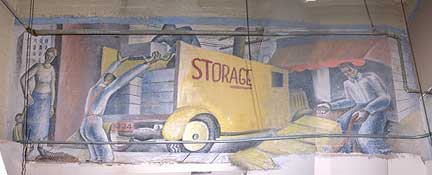
Figure 2.2 Photograph of Genevieve Burgeson Bredo’s
1936 mural, NRA Packages, uncovered during the 2004 ceiling-tile renovations.
Courtesy of Seth Mallios;
photo edited by Donna Byczkiewicz.
The more intact of the two murals is Genevieve Burgeson Bredo’s 1936 NRA Packages (Figure 2.2). It depicts three men unloading crates from a vehicle and carrying them to a corner store as a woman and child watch. The crates have the National Recovery Act emblem on their sides, a splayed blue eagle with the red letters “NRA” above (Figure 2.3). The vehicle is a yellow moving truck that reads “STORAGE” in large letters above “HILCREST 0212W” in smaller letters (Figure 2.4).
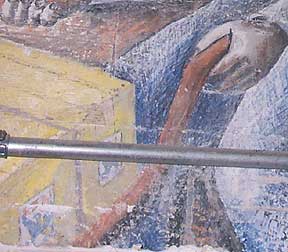
Figure 2.3 Close-up photograph of National Recovery Act emblem. Courtesy of Seth Mallios.
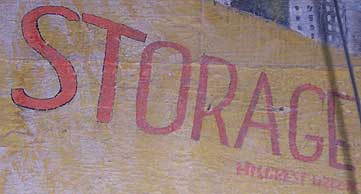
Figure 2.4 Close-up photograph of moving van inscription. Courtesy of Seth Mallios.
The scene is in an urban setting, with high-rise multi-story buildings
and a telephone pole in the background. It likely depicts an area of San
Diego near Hillcrest, which is just north of the downtown area. The vehicle’s
license plate is “1934,” likely a visual pun on the part of
the artist to signify that the mural was being sketched in the year 1934
(Figure 2.5). There is no writing on the red store awning.
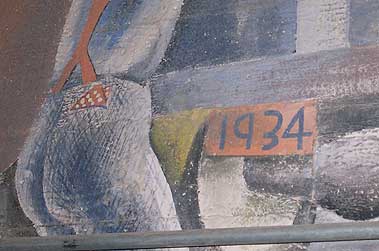
Figure 2.5 Close-up photograph of moving van license plate. Courtesy of Seth Mallios.
Social Realism permeates the mural. The men are engaged
in the hard work of everyday life as they unload the crates. Their large
hands, elongated arms, and powerful legs accentuate the laborious nature
of their actions. Even the limbs of the mother and child appear exaggerated
in the way she pulls her child’s arm upward. Like many WPA murals,
the sexes are depicted in separate realms; the men work and the women
and children watch. The NRA insignia was also a powerful symbol for the
working class in Social Realism art. Although not clearly designated on
the existing mural, the words “We Do Our Part” often accompanied
the emblem. The National Recovery Act created codes of fair competition
for business, established rules to prevent worker exploitation, and sought
to eliminate child labor. Since the government encouraged people to take
their business to stores that participated in this worker-friendly program,
producers and shop owners often displayed the NRA emblem on their goods
and storefronts.
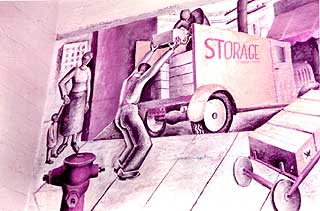
Figure 2.6 Howard Hess and Gordon Samples’ ca. 1959 photograph of Bredo’s NRA Packages mural. Courtesy of the San Diego State University Library, University Archives, Photograph Collection.
The SDSU University Archives contain a photograph that captures most of Bredo’s NRA Packages mural (Figure 2.6). Taken by Howard Hess and Gordon Samples in ca. 1959, the photograph is truncated on the right side and omits approximately one-third of the mural. It does not include the third man with the cart of boxes or the right half of the storefront. It does, however, contain parts of the mural that were destroyed, including a fire hydrant in the lower left corner, the first man’s rolled up pant cuffs, and the bottom half of the moving cart.
Mural #2: San Diego’s Industry
George Sorenson’s 1936 San Diego Industry depicts sequential stages in the local fish industry, including procurement, processing, and distribution (Figure 2.7a-c).

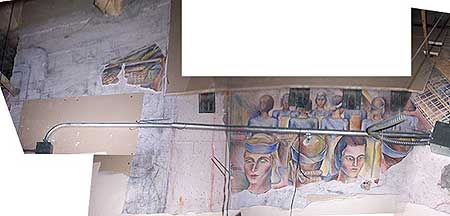
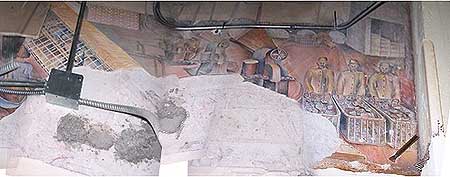
Figure 2.7 Photograph of George Sorenson’s
1936 mural, San Diego Industry, uncovered during the 2004 ceiling-tile
renovations. (A) is the left segment, (B) is the middle segment, and
(C) is the right segment.Courtesy of Seth Mallios; photos edited by
Donna Byczkiewicz.
It runs from left to right. The extant portions of the mural contain about twenty people, although it is likely that the original artwork in its entirety contained many more individuals. The extreme left edge of the mural, which was largely destroyed, shows a man with a large rimmed hat who is fishing with a bamboo pole in his left hand (Figure 2.8).
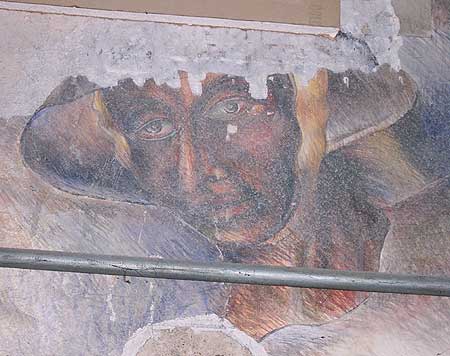
Figure 2.8 Close-up photograph of first fisherman. Courtesy of Seth Mallios.
To the right of him stands a bald man with spectacles who weighs many
large fish on a scale (Figure 2.9).
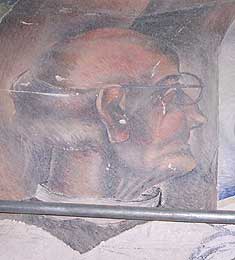
Figure 2.9 Close-up photograph of fish weigher. Courtesy of Seth Mallios.
A man wearing a beret is holding one of these fish, about to place it
on the scale (Figure 2.10).
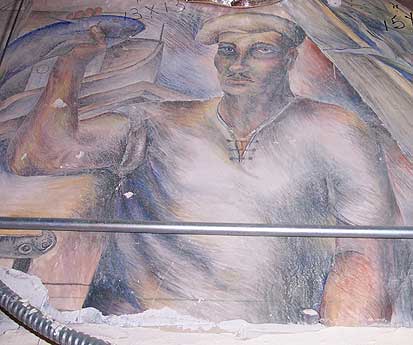
Figure 2.10 Close-up photograph of fisherman
with beret. Courtesy of Seth Mallios.
A spit of land, harbor, dock, and flat fishing vessel are in the background,
just behind the man with the beret. This part of the scene likely depicts
San Diego harbor. Immediately to the right is a chute loaded with fish,
one of which has already been beheaded (Figure 2.11).
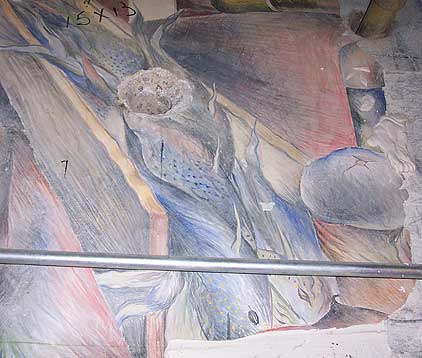
Figure 2.11 Close-up photograph of fish chute. Courtesy
of Seth Mallios.
At least two men are standing on opposite sides of the table that catches the fish for cleaning. Very little of the mural is intact for the next five feet to the right. Although a faint hand sketching of the mural is evident, nearly all of the painted detail is gone. There is a small, fully painted section that shows part of a person’s arm holding a gutted fish. The next extant portion depicts nearly a dozen women standing in two sets of assembly lines, one in the foreground and one in the background (Figure 2.12).
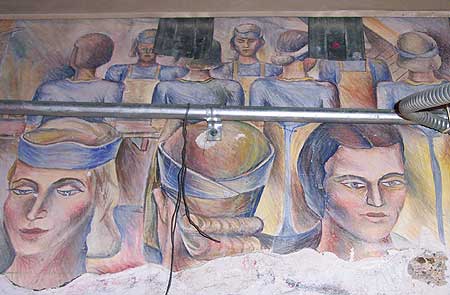
Figure
2.12 Close-up photograph of assembly-line women. Courtesy of Seth Mallios.
Although the eye-level perspective of the mural at this
point hides the identity of what is being processed, the adjacent section
to the right takes a bird’s-eye view, revealing the open cans of
fish which the women have produced. Large canning machinery is in the
background to the right of the assembly line. There is also a man working
the many conveyor belts that are lined with short cylindrical cans (Figure
2.13). 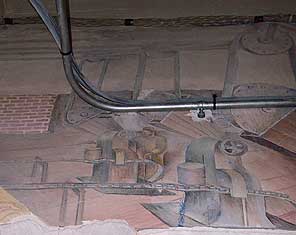
Figure 2.13 Close-up photograph of man working the conveyor belts. Courtesy of Seth Mallios.
At the far right of the mural, there are three Asian men standing behind
large bins of canned fish (Figure 2.14). In the background behind them,
a fourth man pushes an additional bin away from an open storage area that
contains many unmarked boxes.
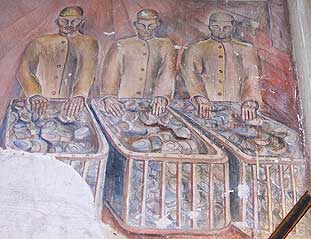
Figure 2.14 Close-up photograph of three Asian men. Courtesy of Seth Mallios.
While Sorenson’s San Diego Industry addresses aforementioned issues
of Social Realism in its depiction of the working class as essential cogs
in the American industrial machine, it exemplifies Regionalization. Regionalized
WPA murals simultaneously accomplished two disparate goals. First, they
followed the federal standards of presenting optimistic portraits of workers
laboriously restoring the promise of the nation. Second, they highlighted
the industry that was particular to their locale. WPA murals that successfully
showcased regional specifics included Detroit, Michigan’s Automobile
Industry, Canton, Ohio’s Steel Industry, Benton, Arkansas’
The Bauxite Mines, and Kilgore, Texas’s Drilling for Oil. For San
Diego, the business of fishing was a primary industrial signature of the
time.
Sorenson’s mural was more progressive and less typical of WPA art
than Bredo’s work in terms of its treatment of women and ethnic
minorities. Although both murals separate men from women, Sorenson placed
the women as an active component of San Diego industry. His female workers
are far from passive onlookers; they are an essential part of the industrial
process. In addition, Sorenson incorporates different ethnicities into
his images. The man on the dock holding the fish is likely African-American,
and he does not appear to be segregated from other ethnicities in the
workplace. The same cannot be said for the three Asian men at the end
of the fish-processing procedure. They are clustered off to the side,
portrayed in distinct clothing, and the slant of their eyes is pronounced,
likely to emphasize their ethnic difference.
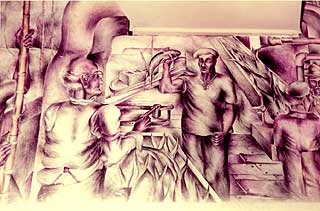
Figure 2.15 Howard Hess and Gordon Samples’ ca. 1959 photograph of Sorenson’s San Diego Industry mural. Courtesy of the San Diego State University Library, University Archives, Photograph Collection.
Hess and Samples photographed a small section of Sorenson’s mural
in ca. 1959 (Figure 2.15). Their image recorded the mural from the bamboo
pole of the fisherman on the left to the industrial chute on the right.
It focused primarily on the two men who loaded and weighed fish on the
dock. The photograph did not include any of the assembly-line women, canning
machinery, or Asian packers.
Sorenson’s WPA-era mural was not his only artwork that left a permanent
mark on San Diego State College. He and Don Luscomb also drew eight large-scale
illustrations for the 1936 San Diego State College yearbook, Del Sudoeste.
One of their drawings included a detailed group caricature of the faculty
(Figure 2.16).
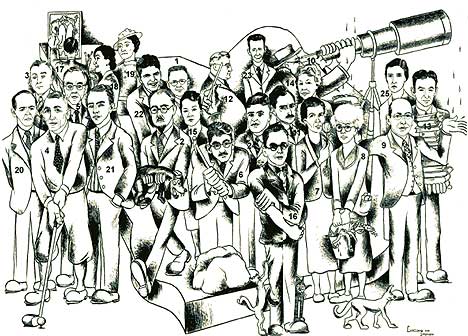
Figure 2.16 Don Luscomb and George Sorenson’s
yearbook caricature of the San Diego State College faculty in the 1936
Del Sudoeste. Courtesy of the San Diego State University Library, University
Archives, Photograph Collection; Donated by the Don Luscomb family. The
faculty are as follows: 1) Arthur G. Peterson, Economics; 2) Franklin
Walker, English; 3) Charles E. Peterson, Physical Education; 4) Oscar
Baird, Physics; 5) George Livingston, Mathematics; 6) Baylor Brooks, Geology;
7) Dorothy Harvey, Botany; 8) Myrtle Johnson, Zoology; 9) Dean Blake,
Meteorology; 10) Alvena Storm, Geography; 11) Leslie Brown, French and
Spanish; 12) Charles Leonard, History; 13) John Paul Stone, Library Instruction;
14) W. T. Skilling, Astronomy; 15) Mary McMullen, Educational Guidance;
16) Robert Harwood, Zoology; 17) Everett Gee Jackson, Art; 18) Marjorie
Borsum, Art; 19) Lena Patterson, Art; 20) Elmer Messner, Chemistry; 21)
Chesney Moe, Physics; 22) Leo Calland, Physical Education; 23) Dudley
Robinson, Chemistry; 24) Fred Beidleman, Music; and 25) Marguerite Johnson,
Latin.
Photographs of Three Other Hardy Memorial Tower Murals
SDSU’s University Archives also contains photographs of three other WPA-era murals once displayed in Hardy Memorial Tower. Each of these murals embodies the themes of Social Realism and Regionalization, depicting working-class labor in the local San Diego industries of lumber, orange production, and military service. The original murals were likely in close proximity to the two recently rediscovered murals and are thought to have been destroyed during pre-1960 building renovations. Hess and Samples took each snapshot in ca. 1959.
The first photograph of these additional murals is of Genevieve Burgeson Bredo’s 1936 Lumber Working (Figure 2.17).
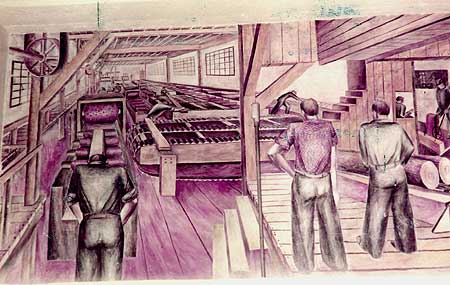
Figure 2.17 Howard Hess and Gordon Samples’ ca. 1959 photograph of Bredo’s 1936 Lumber Working
mural. Courtesy of the San Diego State University Library, University
Archives, Photograph Collection.
It, like Sorenson’s fish mural, showcases the means of production—the
instruments and subjects of labor—that are inherent to the local
economy. Hess and Samples’ other photographs recorded the works
of Ellamarie Packard Woolley, a San Diego native, San Diego State art
student, and daughter of Phineas Packard, the founder of San Diego’s
Arts and Crafts Press. Woolley’s two 1936 Hardy Memorial Tower murals
are entitled Packing Oranges and Sailors Going to Hell. Packing Oranges
bears a striking resemblance to Bredo’s NRA Packages, as each contains
three broad-shouldered male workers in an urban setting, unloading goods
from a truck (Figure 2.18).
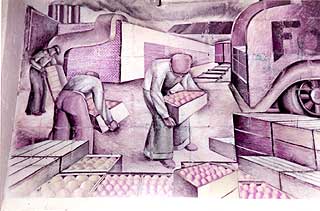
Figure 2.18 Howard Hess and Gordon Samples’ ca. 1959 photograph of Woolley’s 1936 Packing Oranges mural. Courtesy of the San Diego State University Library, University Archives, Photograph Collection.
Sailors Going to Hell is distinctive in its ominous imagery (Figure 2.19). For example, the ship’s far left cannon points directly at the downtrodden sailors as they board the vessel. Building on the maxim that war is hell, the mural’s ambiguous title hints that the ship is either headed to hell or the vessel itself is a hell on earth. Overall, these three additional murals further demonstrate how local artists at times addressed, embraced, and challenged the federal government’s guidelines for WPA/FAP artwork.
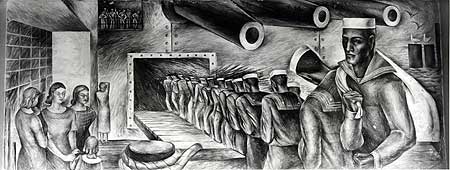
Figure 2.19 Howard Hess and George Samples’ ca.
1959 photograph of Woolley’s 1936 Sailors Going to Hell mural. Courtesy
of the San Diego State University Library, University Archives, Photograph
Collection.
Conclusion
Much of San Diego State College was built by workers employed by WPA Projects
when it was moved to Montezuma Mesa in the 1930s. Contemporary murals
at Hardy Memorial Tower showcased the enduring spirit of these and other
laborers who toiled in local San Diego industries. This artwork both celebrated
and exemplified the spirit of the New Deal, illustrating the ability of
ordinary workers to help resuscitate the nation.
Ever since its Depression-Era construction, San Diego State has been the
people’s college of San Diego. Today, one in every seven adults
in San Diego who holds a college degree attended SDSU. Although the landscape
of the university continues to expand and change, remnants of San Diego
State’s humble origins lay at its core. Even when the past was thought
to have been destroyed, as in the case of the two recently discovered
WPA-era murals in Hardy Memorial Tower, the soul of the university emerges
in the most unexpected places and displays the legacy of its hard-working
laborers, the common people of San Diego.
References Cited
Bourne, Francis T.
1946 Preliminary Checklists of the Central Correspondence Files of the
Works Projects Administration and Its Predecessors, 1933-1944. Records
of the Works Project Administration, Record Group 69, National Archives,
Washington, D.C.
Branton, Pamela Hart
1991 The Works Progress Administration in San Diego County, 1935-1943.
Unpublished M.A. thesis, San Diego State University, San Diego, CA.
Burner, David
1979 Herbert Hoover: A Public Life. New York: Alfred A. Knopf.
Hardy, E. L.
February 23, 1933 The College and the Depression. Transcript, “Radio
Talk” 9:10pm.
McKinzie, Richard D.
1973 The New Deal for Artists. Princeton, N. J.: Princeton University
Press.
Morgan, Ted
1985 FDR: A Biography. New York: Simon and Schuster.
Park, Marlene, and Gerald E. Markowitz
1984 Democratic Vistas: Post Offices and Public Art in the New Deal. Philadelphia,
PA: Temple University Press.
Pohl, Frances K.
2002 Framing America: A Social History of American Art. New York: Thames
and Hudson.
San Diego Union
1935 “1,240,000 WPA Aid,” 1 October: sec. 1, 2.
Webbink, Paul
1960 Unemployment in the United States, 1930-1940. In The Great Depression,
Ed. David A. Shannon. Englewood Cliffs, N. J.: Prentice Hall, pp. 6-7.